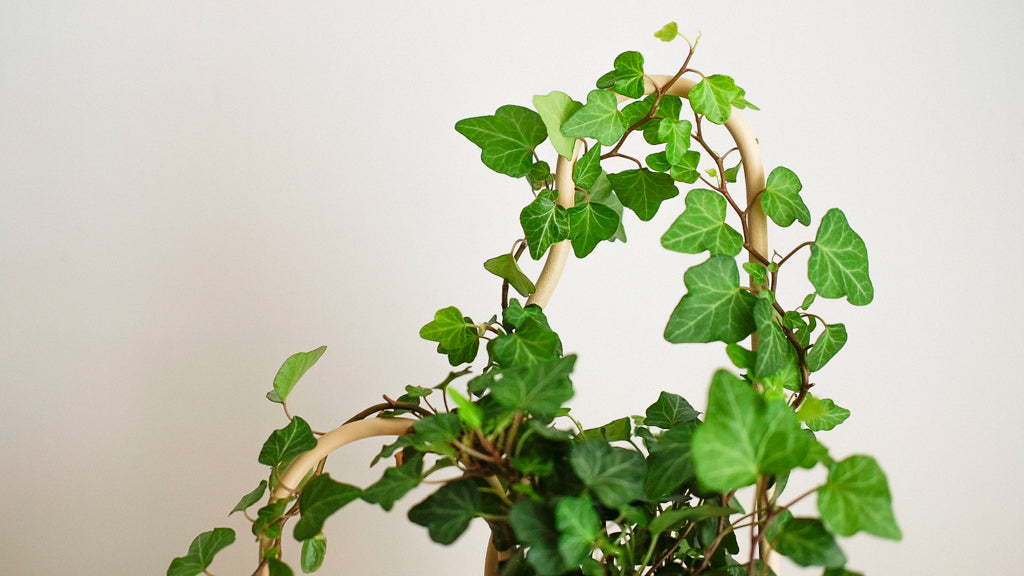
How Much Water Does an English Ivy Houseplant Need?
Do you just love the idea of watering a plant every day? Or, are you wondering what plant to match with your plant straw? If so, you probably need a houseplant that soaks up water like there’s no tomorrow!
English Ivy is well-known for its ability to absorb water quickly and frequently, making them hard to overwater.
These fast-growing plants are native to countries where rainfall is frequent and ground moisture levels are high. While they are considered weeds in some regions, they make beautiful beginner houseplants everywhere!
If you’re thinking about getting an English Ivy houseplant, here’s a guide on how to look after Ivy houseplants and how much water they need to survive.
🤓 Quick Facts: English Ivy
Popular name: English Ivy
Latin name: Hedera helix
Natural habitat: Spreading across houses or shady forest floors in Europe and Western Asia
Light: Partial to full shade
Watering: Frequent watering, keeping the soil constantly moist
Humidity: Low humidity
What Does English Ivy Look Like?
English Ivy are fast-growing plants. In its native environment, which tends to be around Europe and Western Asia, it’s often considered an invasive species. When grown unsupervised, it can quickly smother garden sheds, fences, and even houses!
However, when grown indoors as a houseplant, it makes a beautiful statement. The long, draping vines are perfectly suited to hanging plant pots. They look their best tumbling over bookshelves or side tables, or climbing a trellis.
Its foliage tends to be dark green with prominent white veins streaking through the leaves. In the right conditions, you can often cultivate flowers, berries, and bright green leaves in amongst the dark.
Its Latin name translates to, “The clinging plant that coils in spirals”, which we think sums up English Ivy perfectly!

Plant Straw and Plant Pin in Cookie, Bubble Vase in size 10cm
To the left, Plant Straw in Brass, and the Bubble Vase in both sizes!
Where Does English Ivy Originate From?
English Ivy is most commonly found scattered around the UK, United States, and Canada. However, it can be found anywhere in the world, including warmer regions of Europe, like Portugal, Turkey, and Iran.
It usually grows naturally anywhere with suitable conditions, or it’s specially trained to climb up the walls of houses as decorative insulation.
In the wild, English Ivy often smothers a shady forest floor, where not even grass can survive. While it can eliminate all other species from growing, it plays its part in making the forest thrive.
Insects are drawn to the English Ivy’s’ sweet flower nectar, while birds and deer feast on its purple fruit, which sprout in winter, spring, and summer.
How Much Water Does English Ivy Need?
English Ivy grows best when it gets plenty of water. The more water they get, the quicker they grow!
Since its natural habitat is growing across a dark, damp forest floor in cooler regions, it prefers to live in moist soil when grown in a pot indoors. This keeps the leaves glossy, boosts the probability of indoor flowering, and promotes new growth throughout the year.
They can survive without water for long periods, but the leaves turn dull and new growth stunts.
Remember, even though Ivy is a plant that needs a lot of water, you can kill it by overwatering. Avoid soggy soil by ensuring you water little but often, and only when the soil is drying out at the top. To test whether your English Ivy needs watering, use your finger to see if the top two inches of soil are dry. If they are, water thoroughly. Or use a plant straw to keep the bottom of the pot constantly moist.
Summary
An English Ivy houseplant is one of the easiest plants you can care for indoors. They prefer lots of water, but they can also survive a drought.
If you often forget when you last watered your houseplants, you won’t have an issue caring for an English Ivy.
Water often or use a plant straw to watch them grow faster! Our own photos used for this post was taken in mid April and late June 2022.
Plant straws are designed to keep the soil constantly moist, and to make thirsty plants look their absolute best. So that you and your needy houseplants are happy and thriving, all year round!
Our products are handmade from locally sourced circular materials, with a recycled cotton wick.
Explore the plant straw collection today!




